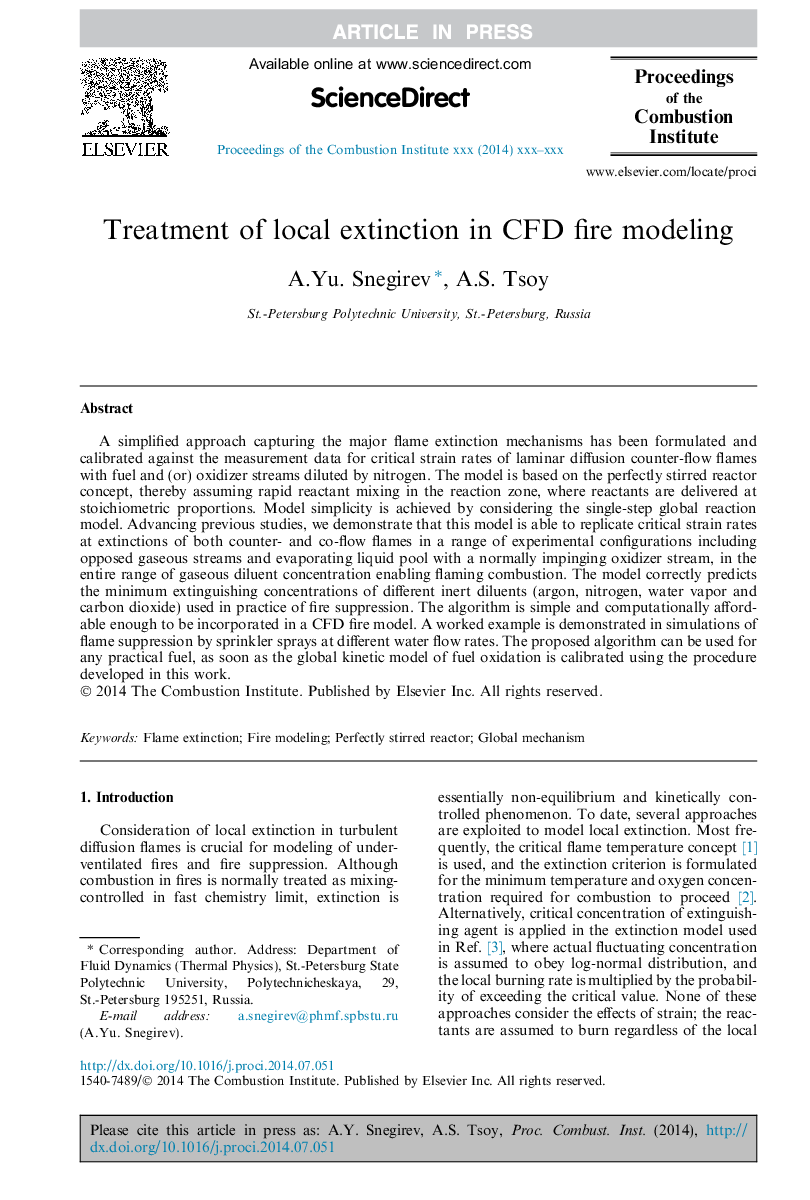| Article ID | Journal | Published Year | Pages | File Type |
|---|---|---|---|---|
| 4915497 | Proceedings of the Combustion Institute | 2015 | 8 Pages |
Abstract
A simplified approach capturing the major flame extinction mechanisms has been formulated and calibrated against the measurement data for critical strain rates of laminar diffusion counter-flow flames with fuel and (or) oxidizer streams diluted by nitrogen. The model is based on the perfectly stirred reactor concept, thereby assuming rapid reactant mixing in the reaction zone, where reactants are delivered at stoichiometric proportions. Model simplicity is achieved by considering the single-step global reaction model. Advancing previous studies, we demonstrate that this model is able to replicate critical strain rates at extinctions of both counter- and co-flow flames in a range of experimental configurations including opposed gaseous streams and evaporating liquid pool with a normally impinging oxidizer stream, in the entire range of gaseous diluent concentration enabling flaming combustion. The model correctly predicts the minimum extinguishing concentrations of different inert diluents (argon, nitrogen, water vapor and carbon dioxide) used in practice of fire suppression. The algorithm is simple and computationally affordable enough to be incorporated in a CFD fire model. A worked example is demonstrated in simulations of flame suppression by sprinkler sprays at different water flow rates. The proposed algorithm can be used for any practical fuel, as soon as the global kinetic model of fuel oxidation is calibrated using the procedure developed in this work.
Related Topics
Physical Sciences and Engineering
Chemical Engineering
Chemical Engineering (General)
Authors
A.Yu. Snegirev, A.S. Tsoy,
